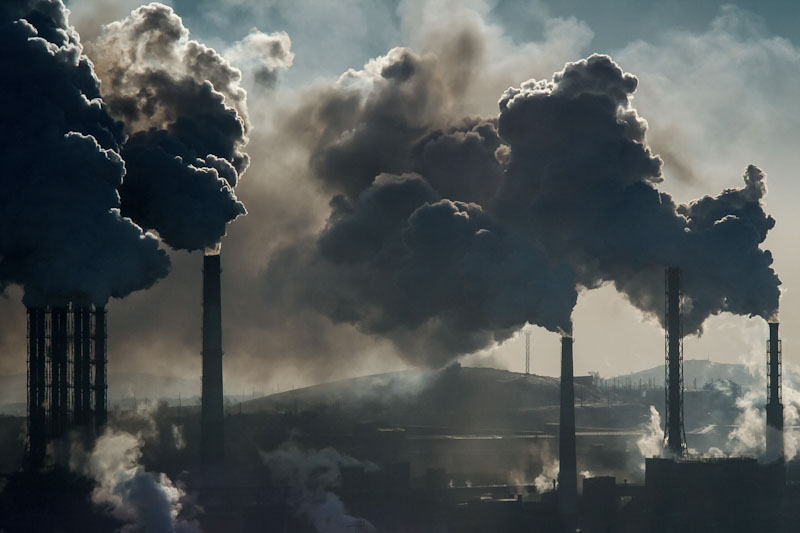NYS Enacts $75-Billion Climate Superfund
By JOHN JORDAN – January 2025
ALBANY—After the State Legislature passed the measure in June, Gov. Kathy Hochul on Dec. 26 signed legislation aimed at bolstering New York’s efforts to protect and restore the environment by requiring large fossil fuel companies to pay billions of dollars for critical climate change protection related projects.
Legislation S.2129-B/A.3351-B creates a “Climate Superfund” that would charge fossil fuel companies $3 billion a year for 25 years, making the total value of the superfund $75 billion. The revenue will support projects throughout the state to improve New York’s resiliency to dangerous climate impacts, such as flooding and extreme heat. While environmental groups hailed the new superfund law, a host of business organizations opposed the measure and lobbied the governor to veto the legislation.

While the law is now in effect, its implementation and subsequent funding for infrastructure projects are at least two years away. In addition, it is expected that legal challenges will be filed against the superfund. New York is the second state in the nation to establish such a climate superfund. Vermont has such a program in place that has already been the subject of litigation.
The new Climate Change Adaptation Cost Recovery Program, ensures that certain fossil companies contribute to the funding of critical infrastructure investments, such as coastal protection and flood mitigation systems, to enhance the climate resilience of communities across the state.
The bill would require the Department of Environmental Conservation to create a program, within one year, that would collect $75 billion from major polluters. It also requires, within two years, that the DEC and other state agencies develop a plan which would guide the disbursement of the funds collected from the program for climate change adaptive infrastructure projects.
“With nearly every record rainfall, heatwave, and coastal storm, New Yorkers are increasingly burdened with billions of dollars in health, safety, and environmental consequences due to polluters that have historically harmed our environment,” Gov. Hochul said. “Establishing the Climate Superfund is the latest example of my administration taking action to hold polluters responsible for the damage done to our environment and requiring major investments in infrastructure and other projects critical to protecting our communities and economy.”
Bill sponsor State Sen. Liz Krueger said, “Repairing from and preparing for extreme weather caused by climate change will cost more than half a trillion dollars statewide by 2050. That’s over $65,000 per household—and that’s on top of the disruption, injury and death that the climate crisis is causing in every corner of our state. The Climate Change Superfund Act is a critical piece of affordability legislation that will deliver billions of dollars every year to ease the burden on regular New Yorkers.”
Sen. Krueger noted that the U.S. Army Corps of Engineers estimates that it will cost $52 billion just to protect New York harbor. On top of that, the state will need $75 billion to $100 billion to protect Long Island and another $55 billion for climate costs across the rest of the state.
State Sen. Pete Harckham added, “As we anticipate the enormous costs associated with climate resiliency efforts to be shouldered by municipalities statewide, it made perfect sense, from the start, to require fossil fuel companies to help pay for the undeniable damage they have done to our environment.”
A host of state and national environmental advocacy groups praised the state’s new Climate Superfund. However, business groups across the state, including the Business Council of New York, the Business Council of Westchester, the Rockland Business Association and the Orange County Chamber of Commerce, opposed it.
The timeline for implementation is as follows, according to the global energy law firm Sidley:
“By April 25, 2025 (120 days from the effective date), the governor is required to publish a public report that will provide steps to be taken to ensure compliance with the Act’s labor and job contracting requirements, the necessary regulations to ensure good jobs and employment opportunities, and how public entities will establish a system to track compliance, accept reports of non-compliance for enforcement action, and report annually on the legislature’s adoption of these standards.
By Dec. 26, 2026 (one year from the effective date), the Act requires the department to promulgate implementing regulations. And, within two years, the department is required to complete a statewide climate change adaptation master plan.”
Earlier in December, the governor signed legislation that expands upon New York State’s 2014 prohibition of high-volume hydraulic fracturing to extract natural gas. Legislation S.8357/A.8866 amends the State Environmental Conservation Law to prohibit the use of carbon dioxide in gas or oil extraction to prevent potential negative health or environmental effects from carbon dioxide fracking in the state.
